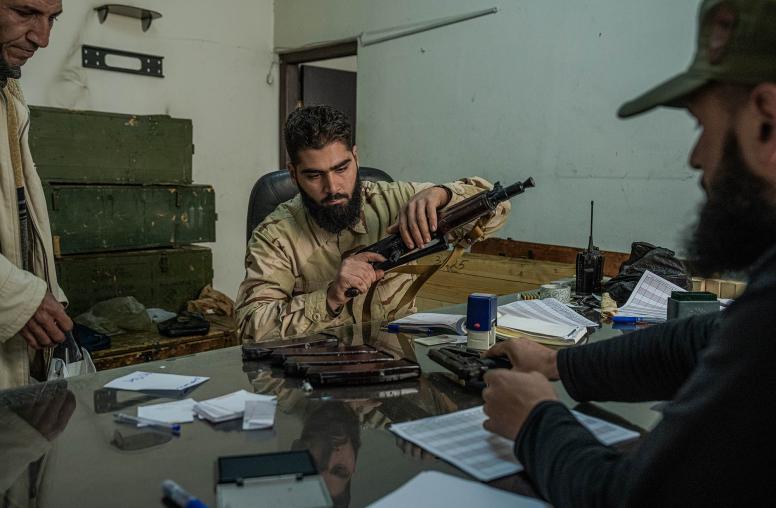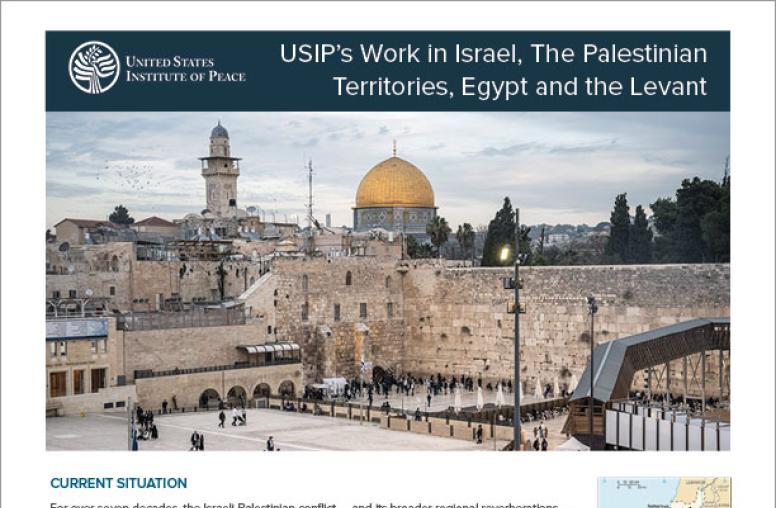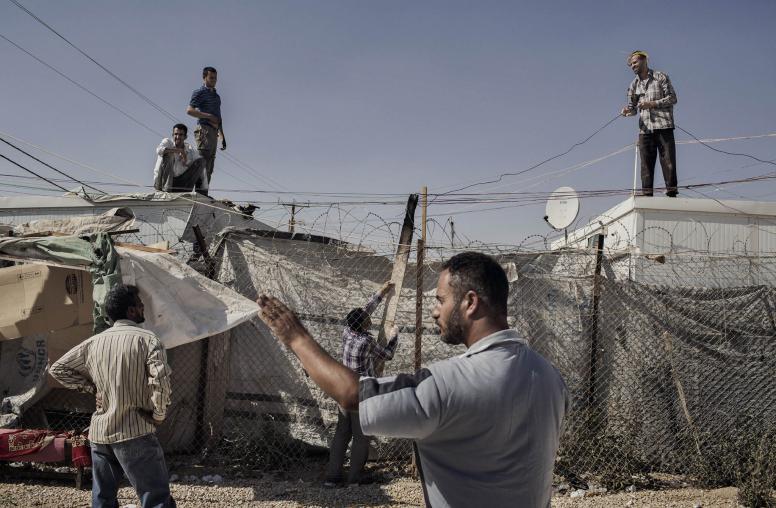A New U.S. Strategy Will Keep American Troops in Syria
USIP Expert Mona Yacoubian on the U.S. Plan—and Turkey’s Objection to a Role for Kurds
Secretary of State Rex Tillerson outlined a new Syria strategy for the Trump administration that includes an extended U.S. troop presence. Tillerson moved to reassure Turkey about U.S. plans, days after the Turkish government objected to a U.S. announcement that would include a Border Security Force in Syria composed heavily of ethnic Kurds. Mona Yacoubian, a longtime analyst and policy specialist on Syria and the Middle East, discusses the implications of these developments.

Tillerson’s speech described a three-pronged approach: 1) a renewed focus on United Nations-led diplomacy; 2) an emphasis on stabilization in ISIS-liberated areas; and 3) a continued U.S. military presence in Syria to prevent the re-emergence of ISIS.
U.S. military officials announced January 14 that the American-led military coalition in Syria would create a force to protect areas along the Turkish border controlled by the U.S.-backed Syrian Democratic Forces (SDF).
But this idea has run headlong into Turkey’s objection to any armed Kurdish presence on its borders—an outgrowth of Turkey’s long domestic struggle between the central government and its own Kurdish minority. President Recep Tayyip Erdogan threatened to “strangle” the planned force, which he called a “terror army.”
To reporters, Tillerson said that "some people misspoke. We are not creating a border force at all," and that the initiative instead was focused on more training for Syrian allies of U.S. forces there. Turkey has massed troops along the border, near the Kurdish canton of Afrin in northwestern Syria.
What is the significance of Secretary Tillerson’s speech?
The secretary’s speech provided the most comprehensive laydown of the Trump administration’s Syria strategy to date. Recognizing the American public’s fatigue with foreign entanglements, Tillerson underscored the U.S. national security interests at stake in Syria and the importance of continued U.S. engagement. Most significantly, the U.S. signaled an intention to maintain a military presence in Syria.
The new strategy marks a significant shift from the limited objectives expressed early in the administration. It focuses on the need to guard against ungoverned spaces, which can be exploited by extremist groups, while also looking to counter both the Assad regime and Iranian influence. In addition, the strategy emphasizes the need to de-escalate violence in Syria to facilitate the return of refugees and IDPs [internally displaced persons] and to rejuvenate the U.N. peace process.
While continuing to call for Assad to go, Tillerson offered less in his speech on how to achieve that objective. He noted the importance of Russian leverage on the regime combined with economic pressure (including withholding reconstruction assistance to regime-held areas) as critical “tools of pressure…to compel Assad to step aside.”
What is the relationship between the United States and the SDF? And why is the U.S. choosing to create a border security force now?
The United States has built a strong relationship with the SDF during the past four years and considers the organization to be the most effective and reliable local partner in Syria in the fight against ISIS. Despite strong Turkish objections, the U.S. announced that it would arm the Kurds directly as part of the military operation last May to liberate Raqqa, the “capital” of the Islamic State’s so-called caliphate.
With the counter-ISIS military campaign winding down, Turkey had hoped the U.S. would drop its support for the SDF. However, the U.S. has now turned its focus to stabilizing ISIS-liberated areas, and it views the SDF and the newly announced Border Security Force as critical elements in that strategy. U.S. military officials have underscored the need to ensure against the emergence of power vacuums in ISIS-liberated areas to prevent the extremist group’s return.
Beyond its post-ISIS strategy, the U.S. is also positioning itself for a protracted and messy endgame to the Syrian civil war. In that context, the Border Security Force could serve three key objectives.
- The U.S. could leverage the BSF to help counter Iranian ambitions in the area;
- It could use this longer-term U.S-backed presence to make life difficult for the Syrian regime and its Russian ally as they seek to further consolidate control across Syria;
- The U.S. might also hope that maintaining a presence on the ground inside Syria will allow it to help shape the outcome of a final political settlement to the Syrian civil war.
Why is Turkey so vehemently opposed to the force?
Erdogan’s statements come in the context of rising tensions between Turkey and the U.S. This latest development represents perhaps the most serious escalation, and Turkey is calling on NATO to take a stance.
Erdogan has long expressed staunch opposition to U.S. support for the Kurdish-backed SDF as the primary U.S. partner on the ground in Syria in countering ISIS. For Erdogan, the PKK [the Kurdistan Workers’ Party, Turkey’s main Kurdish movement] and by extension the Syrian Kurdish YPG [militia force] pose an existential threat to Turkey, one deemed more dangerous even than ISIS.
Ankara has long expressed alarm at the prospect of a Kurdish autonomous region in Syria on its border. It has gone to great lengths to ensure against the establishment of a contiguous Kurdish region in Syria, launching the Euphrates Shield operation in August 2016 to prevent the Kurds from connecting their cantons in northeast and northwest Syria.
With Syrian Kurds seeking a stronger position and their semi-autonomous region inside Syria seemingly more entrenched—albeit with tacit U.S. support—Erdogan’s patience appears to be running thin. The U.S. announcement of a Syrian Border Security Force has only deepened Erdogan’s fury.
Is the United States essentially supporting the creation of an independent, Syrian Kurdish entity?
Despite U.S. support for the Kurdish-backed SDF, the United States remains opposed to the establishment of an independent Kurdish entity in Syria, and the extent to which the U.S. will support or protect the Kurds’ semiautonomous region in Syria remains unclear.
The somewhat tepid U.S. response to the possible Turkish military operation into Afrin—essentially noting it is in Russia’s area of operations—certainly indicates a limit to U.S. support for the Kurds. Sensitive to the potential wavering of U.S. support, Syrian Kurds have maintained open ties to the Russians and quiet, tacit relations with the Syrian regime. A deal between the Syrian regime and Syrian Kurds is not entirely out of the question down the road.


